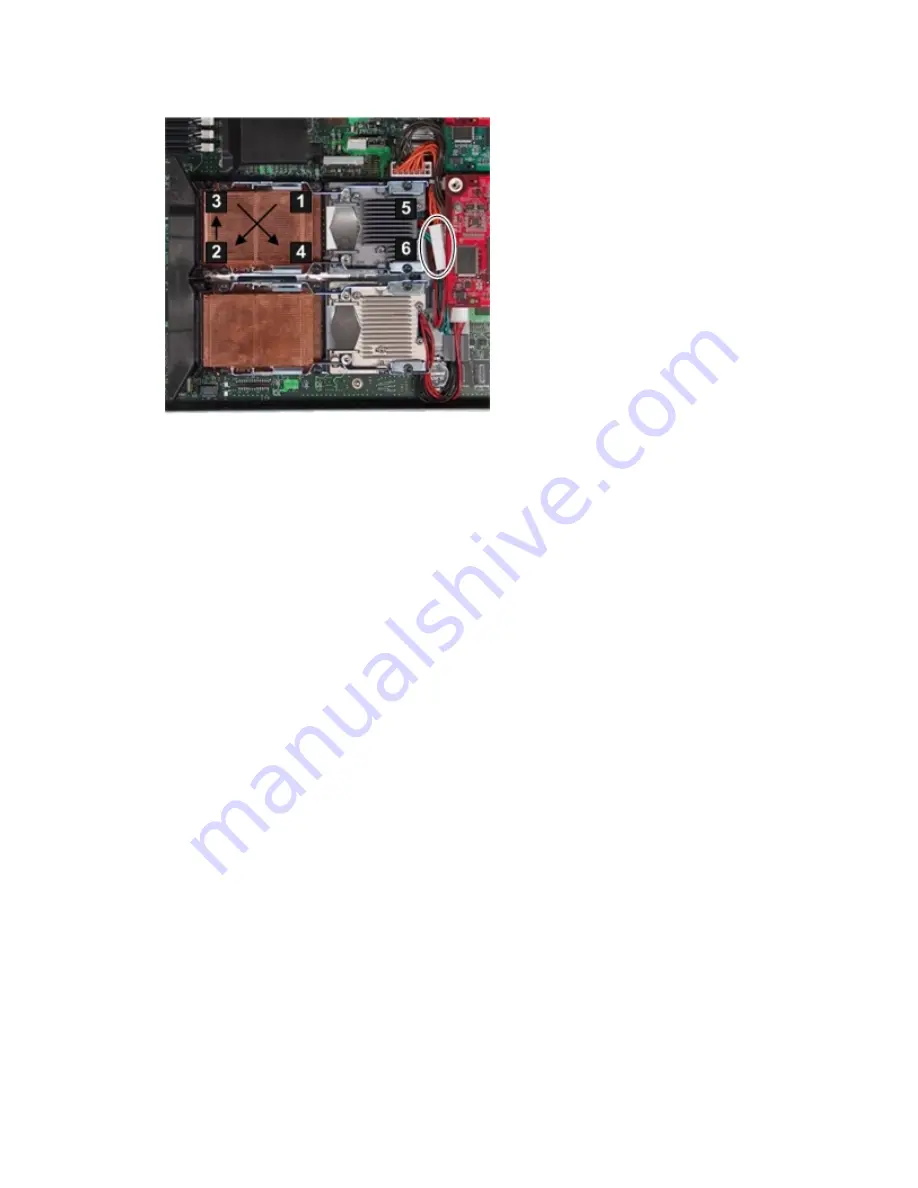
7.
Tighten the captive screws (5 – 6) on the processor with the Torx T-15 screwdriver until snug
Figure 14 Installing a Processor on the Server Blade System Board
8.
Connect the power cable to the processor power connector using the clips shown circled in
Figure 14 (page 32)
.
If you are only adding a processor to your server blade, and not adding memory DIMMs or
mezzanine cards, go to
“Replacing the Access Panel” (page 37)
. If you are adding DIMMs, go
to
“Installing DIMMs” (page 32)
. If you are adding mezzanine cards, go to
“Installing Mezzanine
Cards” (page 33)
.
Installing DIMMs
There are 12 DIMM slots located on the system board. These DIMM slots are designated in six
ordered pairs; 0A – 0B, 1A – 1B, 2A – 2B, 3A – 3B, 4A – 4B, and 5A – 5B. For DIMM slot
locations, see
Figure 15
. This is also the install order. DIMM sizes within each pair must match.
The server blade uses a minimum of 1 GB of memory (two 512–MB DIMMs), and a maximum of
96 GB of memory (twelve 8–GB DIMMs). If you purchased additional memory, use these procedures
to install more memory into your server blade.
Install DIMMs from highest capacity to lowest capacity (for example, install 8-GB DIMMs first, then
4-GB DIMMs, then 2-GB DIMMs, and so forth).
The memory subsystem supports chip spare functionality. The DIMM pairs must be identical to
allow chip sparing. If a multibit error occurs on an SDRAM, chip sparing allows that SDRAM to
be bypassed (logically replaced) on that DIMM.
To allow chip sparing functionality, use only HP DIMMs with the same part number.
The install order for the DIMM pairs is as follows:
1.
Slots 0A and 0B.
2.
Slots 1A and 1B.
3.
Slots 2A and 2B.
4.
Slots 3A and 3B.
5.
Slots 4A and 4B.
6.
Slots 5A and 5B.
To install additional memory DIMMs into the server blade:
32
Installing the Server Blade Into the Enclosure
















































